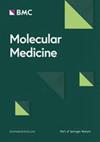Advanced glycation end products and reactive oxygen species: uncovering the potential role of ferroptosis in diabetic complications
IF 6
2区 医学
Q1 BIOCHEMISTRY & MOLECULAR BIOLOGY
引用次数: 0
Abstract
Advanced glycation end products (AGEs) are a diverse range of compounds that are formed when free amino groups of proteins, lipids, and nucleic acids are carbonylated by reactive carbonyl species or glycosylated by reducing sugars. Hyperglycemia in patients with diabetes can cause an overabundance of AGEs. Excess AGEs are generally acknowledged as major contributing factors to the development of diabetic complications because of their ability to break down the extracellular matrix directly and initiate intracellular signaling pathways by binding to the receptor for advanced glycation end products (RAGE). Inflammation and oxidative stress are the two most well-defined pathophysiological states induced by the AGE–RAGE interaction. In addition to oxidative stress, AGEs can also inhibit antioxidative systems and disturb iron homeostasis, all of which may induce ferroptosis. Ferroptosis is a newly identified contributor to diabetic complications. This review outlines the formation of AGEs in individuals with diabetes, explores the oxidative damage resulting from downstream reactions of the AGE-RAGE axis, and proposes a novel connection between AGEs and the ferroptosis pathway. This study introduces the concept of a vicious cycle involving AGEs, oxidative stress, and ferroptosis in the development of diabetic complications.高级糖化终产物和活性氧:揭示铁氧化酶在糖尿病并发症中的潜在作用
高级糖化终产物(AGEs)是蛋白质、脂类和核酸的游离氨基被活性羰基羰基化或被还原糖糖基化后形成的多种化合物。糖尿病患者的高血糖会导致 AGEs 过量。过量的 AGEs 能够直接分解细胞外基质,并通过与高级糖化终产物受体(RAGE)结合启动细胞内信号通路,因此被普遍认为是导致糖尿病并发症的主要因素。炎症和氧化应激是 AGE-RAGE 相互作用诱发的两种最明确的病理生理状态。除了氧化应激外,AGEs 还能抑制抗氧化系统并扰乱铁的稳态,所有这些都可能诱发铁变态反应。铁蛋白沉积是新发现的糖尿病并发症的诱因之一。本综述概述了糖尿病患者体内 AGEs 的形成,探讨了 AGE-RAGE 轴下游反应导致的氧化损伤,并提出了 AGEs 与铁褐斑病途径之间的新联系。本研究提出了糖尿病并发症的发生过程中涉及 AGEs、氧化应激和铁氧化的恶性循环概念。
本文章由计算机程序翻译,如有差异,请以英文原文为准。
求助全文
约1分钟内获得全文
求助全文
来源期刊

Molecular Medicine
医学-生化与分子生物学
CiteScore
8.60
自引率
0.00%
发文量
137
审稿时长
1 months
期刊介绍:
Molecular Medicine is an open access journal that focuses on publishing recent findings related to disease pathogenesis at the molecular or physiological level. These insights can potentially contribute to the development of specific tools for disease diagnosis, treatment, or prevention. The journal considers manuscripts that present material pertinent to the genetic, molecular, or cellular underpinnings of critical physiological or disease processes. Submissions to Molecular Medicine are expected to elucidate the broader implications of the research findings for human disease and medicine in a manner that is accessible to a wide audience.
 求助内容:
求助内容: 应助结果提醒方式:
应助结果提醒方式:


